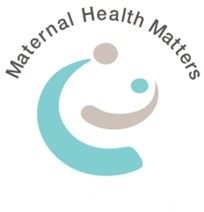Getting your first birth right
MHM believes it is very important for childbearing women to receive safe, evidenced based, respectful maternity care so as to have healthy, strong and confident mothers. What poorer start to life for the baby than an unwell mother. Healthy, strong and confident mothers give a baby the best start influencing the long-term wellness of their child, themselves and the success of their mothering career.

Getting the first birth right is research that focuses on the first birth and dovetails well to the First Baby Campaign.
Getting the first birth right: A retrospective study of outcomes for low-risk primiparous women receiving standard care versus midwifery model of care in the same tertiary hospital
Nola Wong; Jenny Browne; Sally Ferguson; Jan Taylor; Deborah Davis
Women and Birth: Dec-2015 (Volume 28, Issue 4)
Background
There is national and international concern for increasing obstetric intervention in childbirth and rising caesarean section rates. Repeat caesarean section is a major contributing factor, making primiparous women an important target for strategies to reduce unnecessary intervention and surgeries in childbirth.
Aim
The aim was to compare outcomes for a cohort of low risk primiparous women who accessed a midwifery continuity model of care with those who received standard public care in the same tertiary hospital.
Methods
A retrospective comparative cohort study design was implemented drawing on data from two databases held by a tertiary hospital for the period 1 January 2010 to 31 December 2011. Categorical data were analysed using the chi-squared statistic and Fisher’s exact test. Continuous data were analysed using Student’s t-test. Comparisons are presented using unadjusted and adjusted odds ratios, with 95% confidence intervals (CIs) and p-values with significance set at 0.05.
Results
Data for 426 women experiencing continuity of midwifery care and 1220 experiencing standard public care were compared. The study found increased rates of normal vaginal birth (57.7% vs. 48.9% p = 0.002) and spontaneous vaginal birth (38% vs. 22.4% p = <0.001) and decreased rates of instrumental birth (23.5% vs. 28.5% p = 0.050) and caesarean sections (18.8% vs. 22.5% p = 0.115) in the midwifery continuity cohort. There were also fewer interventions in this group. No differences were found in neonatal outcomes.
Conclusion
Strategies for reducing caesarean section rates and interventions in childbirth should focus on primiparous women as a priority. This study demonstrates the effectiveness of continuity midwifery models, suggesting that this is an important strategy for improving outcomes in this population.
#newborn #Primiparous #maternity #caesarean #normalbirth #pregnant #birth-experience # birth-trauma #expectant-mum #motherhood #mother #maternity #vaginal-birth #motherhood #pregnant #parent #expectant #episiotomy #induction #baby
